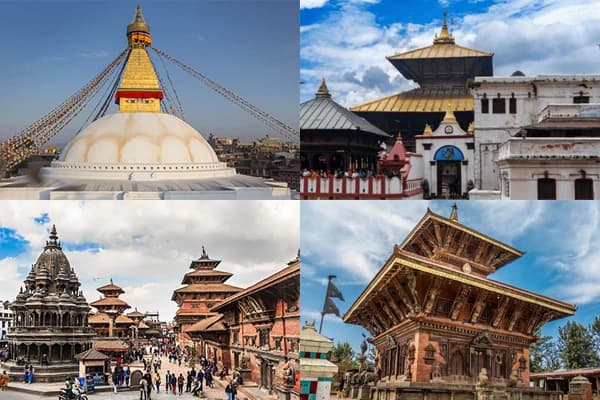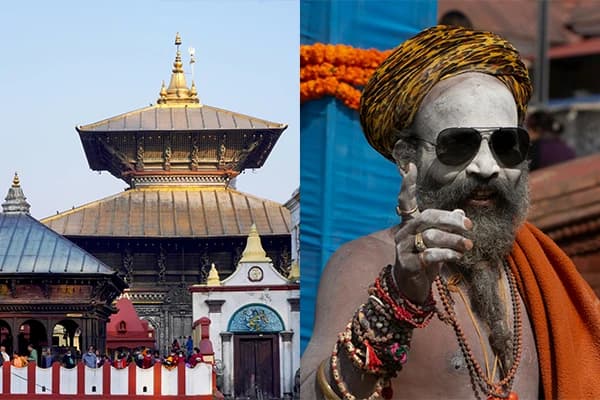Packing List for Annapurna base camp trekking
Travel Documents
- Valid Passport: You must have a valid passport with 2-3 photocopies of it. It will help you in case of theft or loss and click the photo of your passport on your phone as well.
- Airline tickets & Trip blueprint: Make sure to include ana airline tickets and trip blueprints with trip confirmation and itinerary details, if you are traveling without digital gadgets.
- Nepal Visa: Some countries need a visa to enter Nepal, while there is a facility on-arrival visa for some countries. Make sure to click here for more information.
- 4 Passport-size photos: It is needed during permit checking, and for buying local sim cards.
- Travel Insurance: While booking your trek to the Himalayas don't forget to make a travel insurance. It must cover all your medical fees, fees for flight cancellations or trip cancellations, and emergency rescue via helicopter. Keep a photocopy of it and click here for more details.
- Proof of immunization against COVID-19: Bring a copy of immunization against COVID-19 which you can get via physician or from the CDC website.
- Yellow Fever Certificate: Those who are from the country with a risk of yellow fever transmission at the transit, bring a report of yellow fever. Everyone above 9 months should bring these certificates.
- Cash & Credit Cards: Bring a handful of cash at least $200 to $300 as higher altitudes donot have any online transactions as well as ATM booths. Bring a credit card as well.
- Ensure that your passport has a validity of at least 6 months remaining while leaving your country. Otherwise, you may be unable to exit from your home Country.
Essential Travel Clothing for the trekking and staying in the teahouses
1. Headwear
The trekkers need to walk more than 6 hours a day to reach their destination on time. The scorching sun provides harmful UV rays so you need to wear a sun hat or cap to avoid this. It helps you avoid sunburn, and heat stroke and protects your eyes from the direct rays.
During the winter season, the morning and night time temperature falls below freezing point due to snowfall. If you are traveling in this season, pack a knitted hat or beanies.
The scorching sun will make your neck area skin tan, to avoid this, a scarf or neck gaiter is needed. It also adds warmth to your body while hiking at a higher altitude in the Annapurna region.
A puffy down jacket is required to withstand the freezing temperature of the Annapurna Base Camp trekking. It will insulate your body heat and you will stay warm in the extremely cold temperature of the higher altitude. There are plenty of hoax brands, make sure to buy brands like Montbell, Mountain Hardwear, and many more. Our company also provides a rental jacket with an additional cost if you don't trek frequently in the Himalayas.
2. Torso
The base layer is directly connected to your body. It gives insulation to your body and it should be of technical fabric like merino wool which provides breathability, moisture-wicking, odor-resistant, and thermal. It must be quick drying and make sure to add both short and long-sleeved shirts to wear according to the temperature.
- Waterproof and Windproof Shell
You should wear an additional waterproof or windproof layer above the base layer while trekking in the Annapurna Base Camp Trek in the monsoon. It helps your body temperature to stay balanced throughout the trek. The hardshell jacket is also required for protection against snow, strong winds, and heavy rainfall.
A Fleece jacket or pullover is needed while trekking in the lap of the Himalayas. Its insulating nature helps to trap the air and lock the body warmth.
3. Lower Body
Hiking pants are also an essential packing list. Thermal leggings made with technical fiber should be included in your list. The long hour of walking is needed while trekking on the route of the Annapurna Base Camp, so your pants must be breathable and quick drying quality.
While hiking in the daytime in the warmer segment, hiking shorts protect you from heat stroke. Providing proper regulation of air soothes your long journey to the base camp. The convertible pants help you to save time, space, and money, buying them will surely help you enjoy more.
- Waterproof and Windproof Shell Pants
These waterproof and windproof shell pants protect you from bugs, insects, snow, wind, rainfall, and any kind of scratches.
Bring comfortable pants and trousers for wearing at the tea houses. These relaxing clothes will give your body a break from the trekking gear.
Pack the best quality undergarments for your travel. Make sure to add some extra undergarments, as there will be no facility for laundry throughout the trek. You should take care of the following things:
- Quick drying with a technical fabric.
- An extra bag to store the used undergarments.
- Brings a sports bra as it provides comfort while walking for longer hours.
- Sleeping clothes and pajamas should be comfortable with thermal insulation.

4. Foot Wear
While wandering on the route of the ABC trekking, you need to walk more than 6 hours daily. So, you must bring a hiking boot with a good grip that should break them before starting your actual trekking. It will avoid blisters, hot patches, and sores on your leg. Boots should be very sturdy, and waterproof which should provide ample ankle support.
Liner socks are optional but they provide comfort by absorbing and avoiding blister formation. The additional warmth is also received from it.
Make sure to pair your boots with good quality hiking socks that provide you with extra cushioning and support during long and strenuous everyday walks. They also help to prevent blisters and pain in your feet.
During winter, the trekking trails of the Annapurna Base Camp are covered with snow which makes the temperatures fall below the freezing point. The hiking socks will not insulate your feet from the cold, so woolen socks will prevent swelling up and frostbitten.
When you are at the tea house, you need to have comfortable shoes. Casual shoes are also used while exploring the nearby villages.
Ice cleats provide good grip while walking over the snow-covered trail of the Annapurna base camp in winter. Microspikes or ice cleats are needed during the Annapurna Base Camp trek in winter.
Gaiters help your shoes and lower part of teh legs from dust, debris, snow, and water. Bring one pair of gaiter as it also provides safety while walking through the dense bushed forests.
5. Hand Protection
The hand is the most exposed portion of your body. It is more vulnerable to the cold temperature than other parts of the body. You must protect your hand from frost nips or frostbites and swollen fingers and palms. Bring the following things to make your travel secure and comfortable:
Liner gloves absorb the sweat and provide extra insulation to your hands. The breathability and quick drying properties make it perfect to use while trekking to the Himalayas of Nepal. The liner glove should be lightweight and must be made of technical fabric which can be worn as a base layer on freezing days.
Shell gloves when worn over the liner gloves brought extra protection and warmth while strolling on wet and windy days. Waterproof shell gloves protect your hands from frostbite during the snowfall.
6. First Aid & Medicines
Trekking in the remote places of the Annapurna region like the Annapurna base camp brings many possibilities of misfortunes like injuries, altitude sickness, headache, stomach discomfort, and so on. You need to be well prepared and must bring medicines along with first aid preparation. If you are prescribed medicine, make sure to bring it too. You should bring the following things:
- Painkiller
- A broad-spectrum antibiotic
- Ibuprofen, Panadol, electrolytes, gastro stop, anti-inflammatory cream, plasters, and strapping tape
- Cough syrup
- Antipyretics
- Bismuth subsalicylate for indigestion or diarrhea
- 125 mg or 250 mg Acetazolamide tablets for altitude sickness (Consult your doctor)
- Band-aids, gauze, tape, blister plaster
- Antibiotic ointment
- Crepe bandages
- Prescribed medications, if any
7. Toiletries & Personal Hygiene
- Sun protection
- Mosquito repellant cream
- Soap, Shampoo, and Conditioner
- Travel Towel
- Toothpaste and Toothbrush
- Deodorant and Wet Wipes
- Hair Brush and Hair Ties
- Tampons or Pads
- Toilet Paper and Hand Sanitizer
8. Bags
You must have a reliable and strong bag to fit all those trekking gear and clothing.
A duffel bag is needed if you are hiring a porter. Your bag must be durable and waterproof which should last throughout the trek.
You must have a backpack which has a capacity of 40 to 60 L. If you want to carry your bag instead of letting a porter do it, bring a backpack that can hold all of your belongings during the journey.
A day pack is needed to find all the essentials when needed on the trip. You will not waste time searching for things like a camera, phone, sunscreen, binoculars, etc.
You should bring a rain cover to protect your bag from snow, dust, and rain. This will make your belongings clean and safe.
9. Sleeping Gears
The sleeping bag is essential when you are roaming the lap of the Himalayas like Annapurna Base Camp. Guest houses and lodges give you a mattress and a blanket but bringing your sleeping bag with a hood will give you extra warmth.
When traveling to remote places, you should bring additional sleeping gear like a pillow cover, bedsheets, and earplugs. The bedsheets of tea houses and lodges kind of smell, if you are a cleanliness freak bringing your own sleeping material will help you to avoid direct contact with the linen. Earplugs will help you from a loud snorer in the next room, as the walls are not soundproof.
10. Electronics
Nowadays people can't live without a mobile phone and they take it wherever they go. While trekking in the ABC, wifi services are available in a few tea houses but buying your own local sim card will benefit you by getting access to an internet facility. Bring your own charger and mobile phone so that you can get information regarding the weather and trails of the routes.
- Camera, Memory Cards, and Charger or Batteries
The majestic view of the snow-covered mountains and natural beauty is the main highlight of the ABC trekking. Bringing a camera helps you to capture a perfect shot of the mountains as a memory. Bring extra batteries in case your batteries run out.
- Headlamp and Extra Batteries
The electricity services in the trekking areas are not reliable due to extreme weather like heavy rainfall, thunder, and lightning. So, the locals depend on solar energy for their daily chores. Bringing a headlamp and extra batteries will help you overcome the darkness caused by electricity outrages while going to the washroom at night.
Power banks help you to charge your laptop, phone, and other gadget at the same time. It saves you money as well as time. This will avoid waiting in a long queue during the trekking season. Most of the tea houses do not have electrical outlets in their room. You need to pay money to use the communal outlet.
11. Foods and Water
While trekking in the high altitude region, you must hydrate yourself regularly. You will suffer from waterborne disease if you drink untreated water, so you must bring a water filter, water treatment drops, or tablet. There is mineral water available in the tea houses and lodges but we prefer safe tourism and buying water bottles will only cause plastic litter. You can ask for hot water in the hotel by paying an additional amount. Bring Steripen in case of a sensitive stomach, as it uses UV rays to treat the water.
Bring your water bottle to avoid garbage problems. Buying a wide open-mouth bottle will make it easier to fill the water and treat it.
The package to Annapurna base camp provides three hot meals in the tea houses and lodges. If you like to eat frequently, bring some energy bars, nuts, chocolates, and cookies.
12. Miscellaneous items
- Contact lenses
- Trekking Poles
- Power glasses
- Flasks
- Umbrella
- Padlocks
- Multi-tools
- Universal adapter
- Swiss knife (optional)
- Activated charcoal (optional)
- Stuff sacks/Dry bags or Ziploc-type plastic bags (optional)
13. An additional item for men
- Small mirror
- Razor and shaving cream
- After shaving gel or lotion
- Pee bottle
14. An additional item for women
- Urinating device (Shewee)
- Pee cloth
- Feminine wipes
- Menstrual cups
- Tweezers
- Sanitary Napkins
- After shaving gel or lotion
Conclusion
To fully enjoy the journey to the Annapurna Base Camp, you must pack your bag with appropriate trekking utilities. We hope this guide will help you ease your packing stress. The trekking gear and equipment are available for rent which you can check while doing the kathmandu valley excursion. If you have any queries regarding the trip, make sure to contact us.






